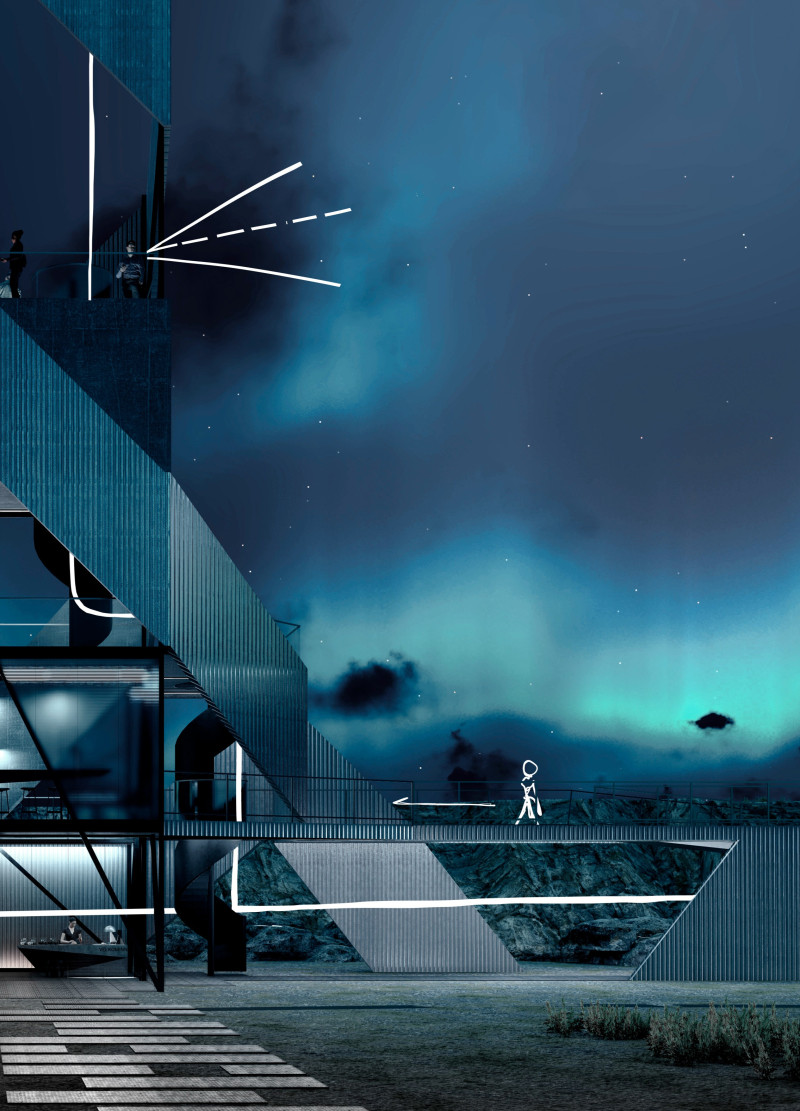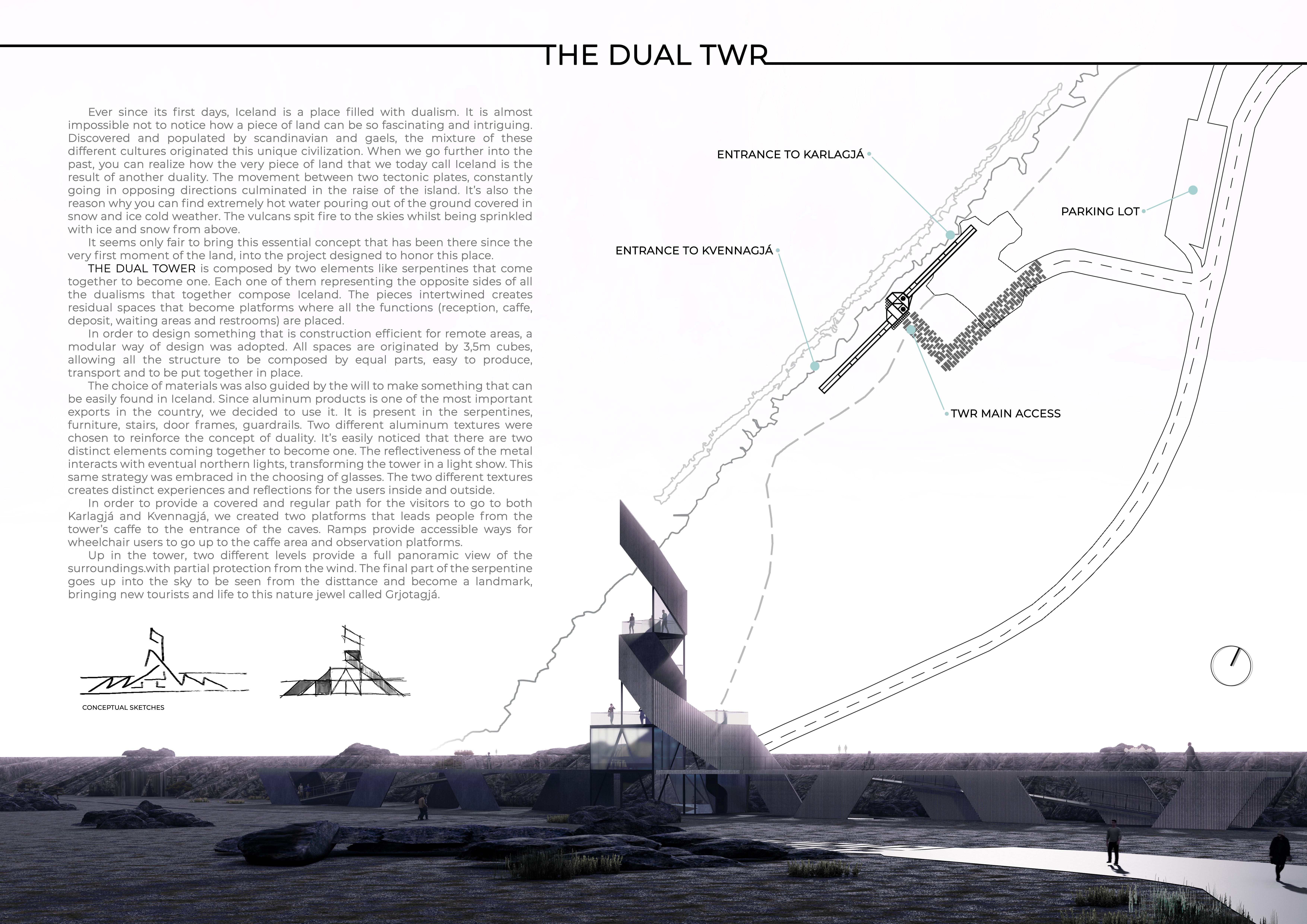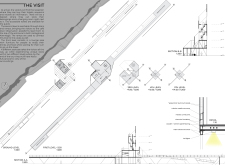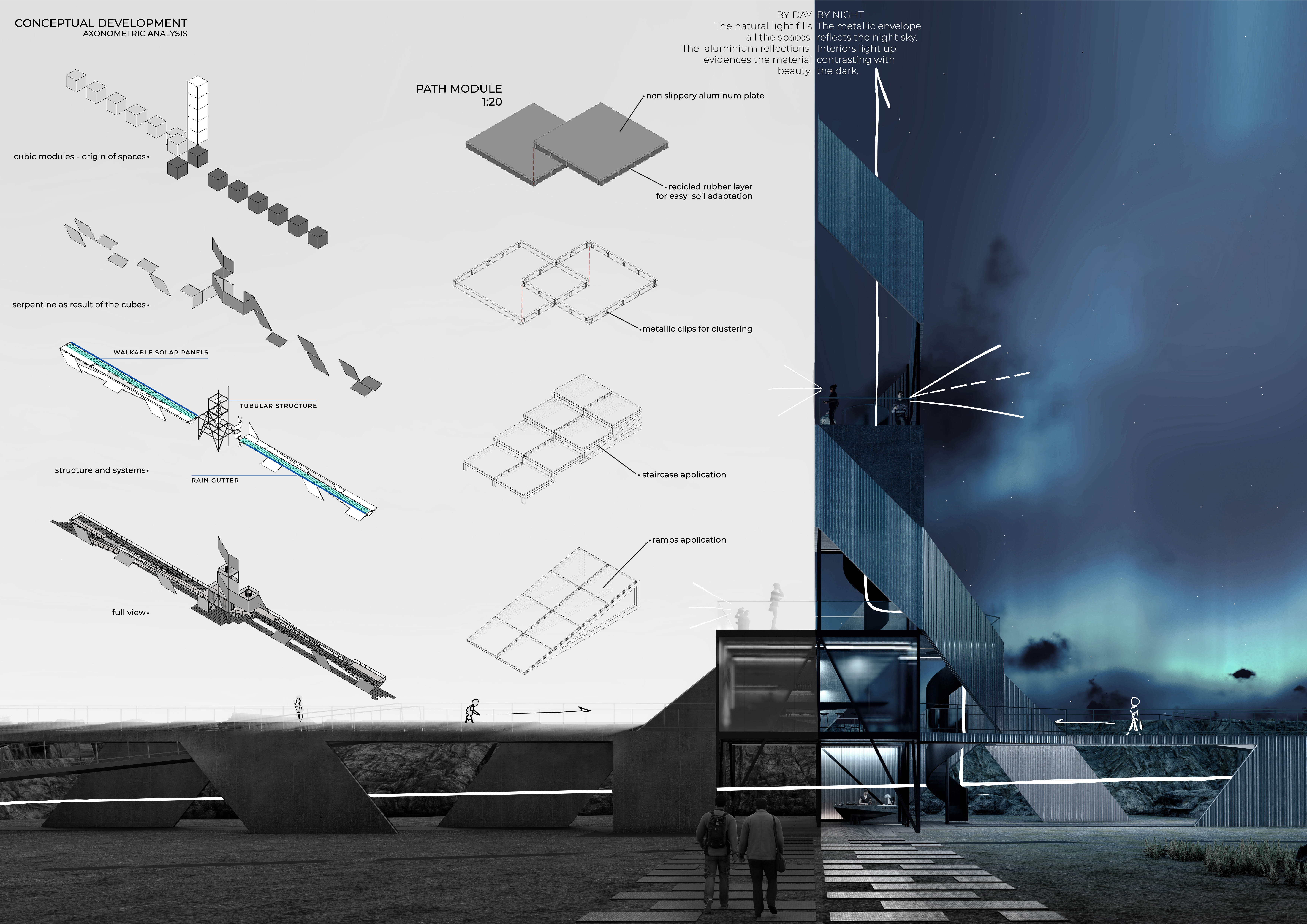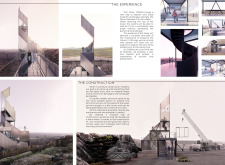5 key facts about this project
The Dual Tower project offers a thoughtful exploration of duality set against the unique landscape of Iceland. Positioned close to the geological formations of Grjotagjá, the tower provides a space for visitors to connect with nature while reflecting the area’s rich cultural and geological heritage. The design concept interweaves themes of fire and ice, heat and cold, presenting these contrasting elements through its distinct form and functional spaces.
Design Concept
The architecture consists of two serpentine forms that twist together, symbolizing the various influences that have shaped Iceland’s identity over time. This merging creates different functional areas, including a reception, café, deposit, waiting areas, and restrooms. The design encourages interaction and efficient use of space, allowing visitors to move through the tower while experiencing the beauty of the surrounding environment.
Material and Modular Approach
A key aspect of the design is its modular approach, built around a grid defined by 3.5-meter cubes. This plan enhances construction efficiency and adaptability for the site’s remote location. The modular system simplifies production, transportation, and assembly, addressing the practical challenges presented by Iceland's diverse terrain.
Visitor Experience
The tower prioritizes accessibility with ramps integrated into the design, ensuring all visitors, including those with mobility difficulties, can comfortably navigate the space. Two platforms extend from the café area to the entrances of the geological sites, Karlagjá and Kvennagjá. This thoughtful layout guides visitors naturally through different areas while providing opportunities for exploration and engagement.
Reflective Materiality
Aluminum is a prominent material used in the tower, aligning with its contextual themes. This choice is both practical and visual, as the reflective surface interacts with changing light conditions throughout the day. The decision to use aluminum emphasizes the connection between the structure and its natural surroundings, reinforcing its role as a visible landmark within the landscape.
The design culminates at the tower's apex, where it rises towards the sky, creating a clear point that marks its presence against the horizon. This elevated design invites visitors to discover the geological features that lie below, completing the connection between the built environment and the natural world.


